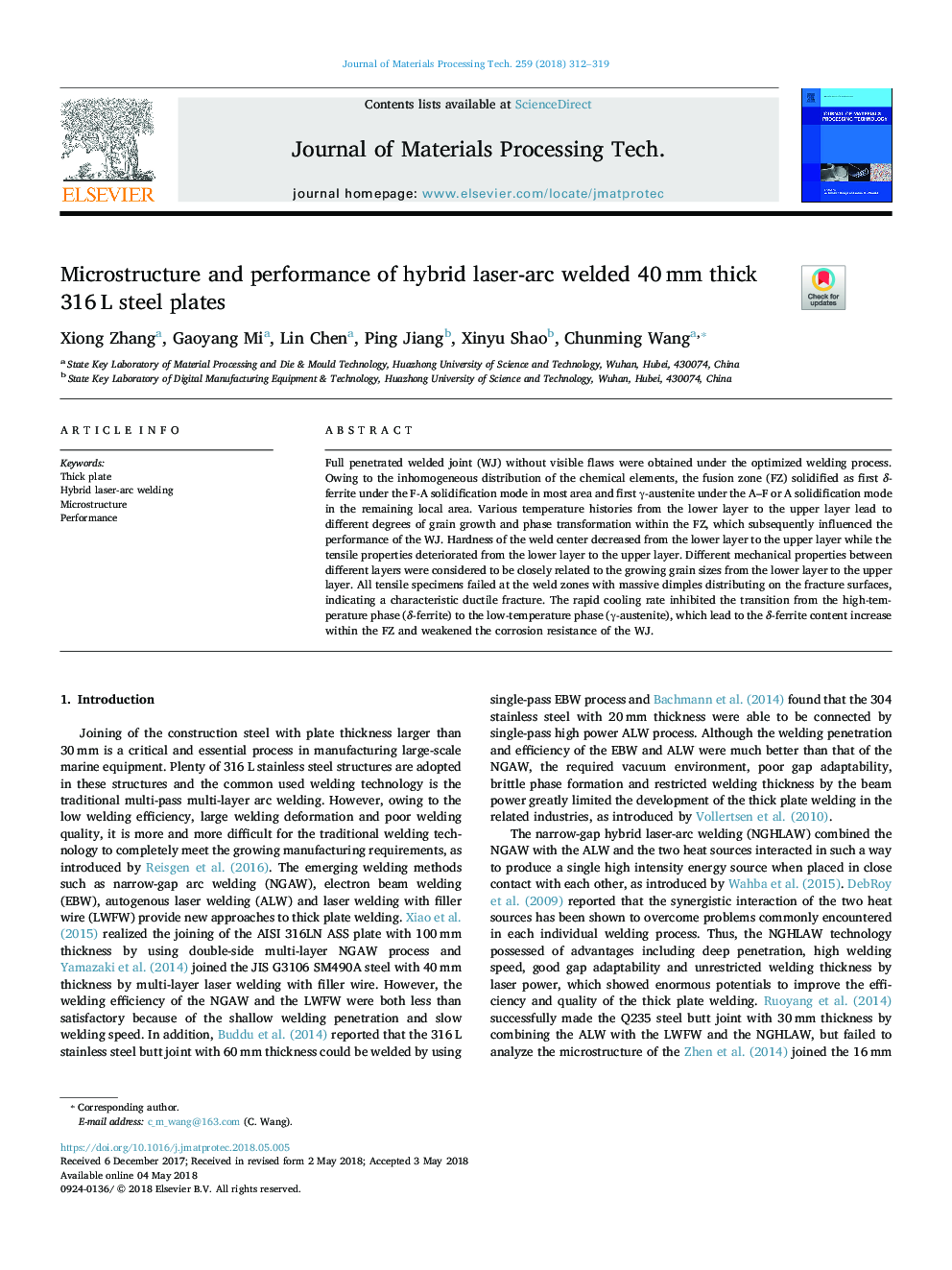| Article ID | Journal | Published Year | Pages | File Type |
|---|---|---|---|---|
| 7176304 | Journal of Materials Processing Technology | 2018 | 8 Pages |
Abstract
Full penetrated welded joint (WJ) without visible flaws were obtained under the optimized welding process. Owing to the inhomogeneous distribution of the chemical elements, the fusion zone (FZ) solidified as first δ-ferrite under the F-A solidification mode in most area and first γ-austenite under the A-F or A solidification mode in the remaining local area. Various temperature histories from the lower layer to the upper layer lead to different degrees of grain growth and phase transformation within the FZ, which subsequently influenced the performance of the WJ. Hardness of the weld center decreased from the lower layer to the upper layer while the tensile properties deteriorated from the lower layer to the upper layer. Different mechanical properties between different layers were considered to be closely related to the growing grain sizes from the lower layer to the upper layer. All tensile specimens failed at the weld zones with massive dimples distributing on the fracture surfaces, indicating a characteristic ductile fracture. The rapid cooling rate inhibited the transition from the high-temperature phase (δ-ferrite) to the low-temperature phase (γ-austenite), which lead to the δ-ferrite content increase within the FZ and weakened the corrosion resistance of the WJ.
Related Topics
Physical Sciences and Engineering
Engineering
Industrial and Manufacturing Engineering
Authors
Xiong Zhang, Gaoyang Mi, Lin Chen, Ping Jiang, Xinyu Shao, Chunming Wang,
